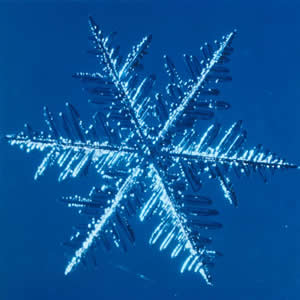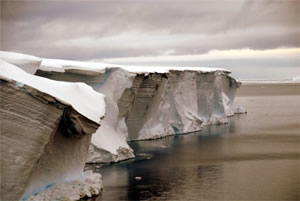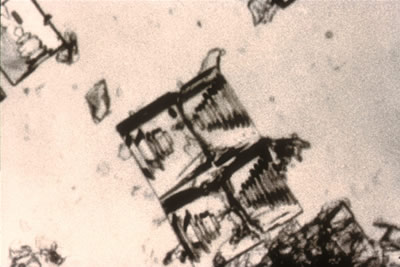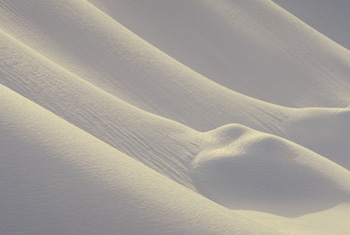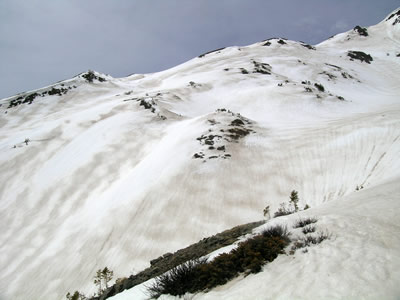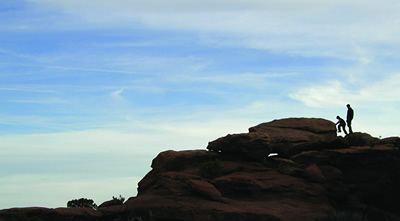Click on image for full size
UCAR
Snow
Snow is part of the cryosphere. It is a type of precipitation in which water falls as ice crystals, or combinations of many ice crystals, called snowflakes. Snowflakes form in clouds where the temperature is below freezing (0ºC, or 32ºF). The ice crystals form around tiny bits of dirt that have been carried up into the atmosphere by the wind. As the snow crystals grow, they become heavier and fall toward Earth.
Each snowflake can be made of as many as 200 ice crystals. Many snowflakes are symmetrical hexagonal (six-sided) shapes because water molecules often organize with this type of symmetry as they freeze. If they spin like tops as they fall to the ground, they may be perfectly symmetrical. Other types of snowflakes end up lopsided. Different types of snowflakes form in different conditions. Temperature determines if the crystals become a flat plate, a long column, or a prism shape.
On average, 10 inches of snow melt down to about an inch of water; however, not all snow is the same. Some places receive very heavy snow. For instance, only five and a half inches of January snow on Mount Washington, New Hampshire, melt down to an inch of water. In contrast, over 15 inches of January snow at Crested Butte, Colorado, melt down to an inch of water.
There are areas on Earth where snow covers the land surface year-round. These areas are often known as snowfields and are found both at high latitudes, where snow is common and temperatures stay cold year-round, and on mountaintops, where the high altitude causes temperatures to be cold year-round. The extent of the snow cover can change with the seasons - more snow added during winter and some of it melted away during summer. Recently, the snow cover on some mountaintops, especially mountains at low latitudes, has been shrinking because the Earth is getting warmer.


